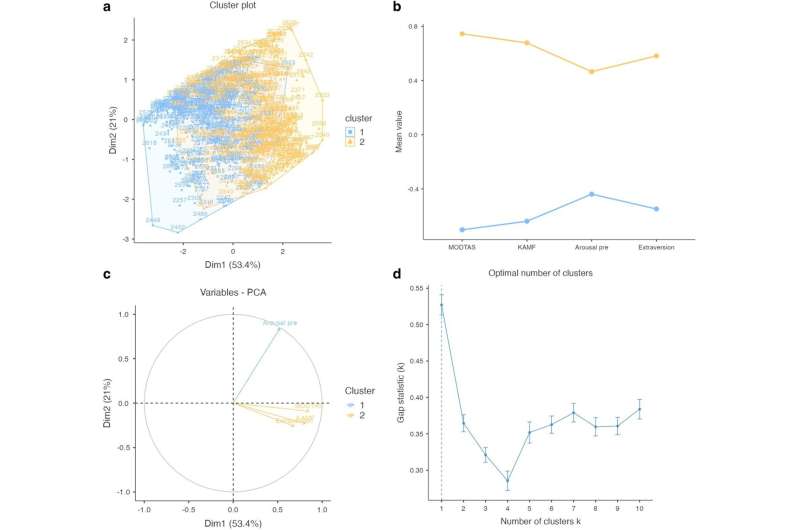This article has been reviewed according to Science X's editorial process and policies. Editors have highlighted the following attributes while ensuring the content's credibility:
fact-checked
peer-reviewed publication
proofread
Predicting who will experience aesthetic chills

Researchers have built a model that can predict with 73.5% accuracy when a person will experience aesthetic chills: shivers, goosebumps, or a feeling of cold down the neck or spine elicited by aesthetic stimuli, such as beautiful music or an inspirational speech. Felix Schoeller and colleagues surveyed 2,937 people from Southern California through an online platform, gathering data on their personalities, demographic backgrounds, and emotional state.
The authors then exposed survey respondents to 40 emotion-evoking audiovisual clips sourced from social media, selected because commenters had reported experiencing aesthetic chills while watching and listening.
The clips included choral performances, a commencement speech by a minister, readings of poems by Charles Bukowski and Mary Oliver, pop songs by Radiohead and Sigur Rós, and scenes from the films Hunger Games and Everything Everywhere All At Once, along with many others.
The authors then built a model that identified demographic, psychological, and contextual factors that would predict whether a given person would experience aesthetic chills when watching or listening to a clip. People who reported being alert and in a good mood were more likely to feel chills than those who were tired or in a bad mood.
Other factors that correlated with high probabilities of experiencing chills were being 35–44 years old, being male, being a Democrat, and having a graduate degree.
Psychological characteristics such as extraversion and conscientiousness were also predictive of experiencing chills, as were high scores on specialized psychological scales that measure a person's propensity to be emotionally moved (the Kama Muta Frequency Scale) and absorbed in the moment (the Modified Tellegen Absorption Scale).
According to the authors, additional research into how emotional experiences are shaped by psychological, demographic, and cultural variables could eventually inform the use of aesthetic chills as a non-pharmaceutical treatment for affective disorders such as depression.
The paper is published in the journal PNAS Nexus. Examples of goosebump-inducing stimuli are available at the project website: http://chillsdb.com.
More information: Felix Schoeller et al, Predicting individual differences in peak emotional response, PNAS Nexus (2024). DOI: 10.1093/pnasnexus/pgae066. academic.oup.com/pnasnexus/art … /3/3/pgae066/7618479
Journal information: PNAS Nexus
Provided by PNAS Nexus




















